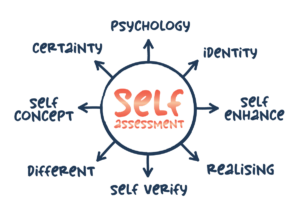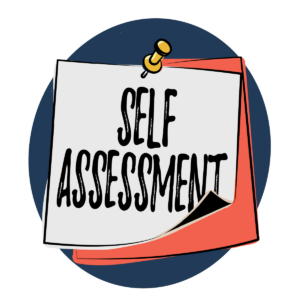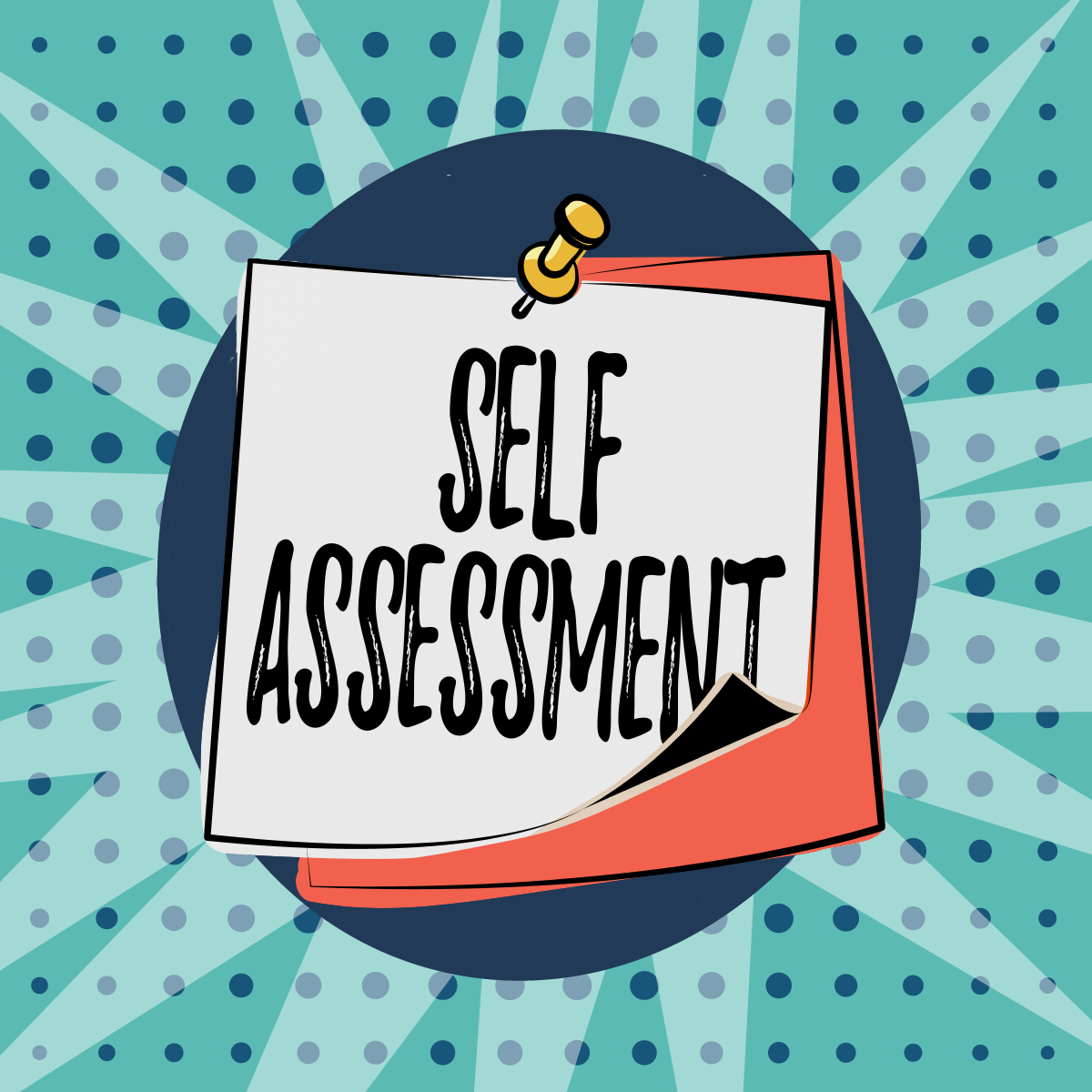
Self-assessment isn’t just a tool; it’s a mindset. What if the key to unlocking student potential lies in their ability to assess their growth? Through self-assessment, learners build the self-awareness, responsibility, and agency needed to succeed beyond the classroom. It supports critical reflective skills necessary for long-term success.
How can Impact Teams-PLCs guide students to effectively assess their own learning in a way that is asset-based and trauma-informed?
Here’s a step-by-step approach to self-assessment that integrates CASEL’s SEL competencies—responsible decision-making, self-awareness, and self-management—to ensure the process is inclusive and centered on student strengths.
Step 1: Co-Construct Success Criteria Together
Self-assessment begins with students knowing what success looks like. Rather than providing pre-made rubrics, engage students in co-constructing success criteria using exemplars, student samples, and non-examples to ensure a clear, shared understanding of what meets the standard and what does not. Without examples of student work, success criteria can leave students uncertain about the different ways success can be achieved.
Example Process:
- Introduce the Learning Goal: Present the learning goal in student-friendly language, aligned with a cluster of priority standard(s).
- Examine Exemplars and Non-Examples: Provide students with a variety of work samples, including both exemplars (strong work) and non-examples (work that doesn’t meet the standard). Guide the class through a comparison of the two. For instance, “What do you notice about this sample that makes it strong? How does this other sample fall short of the goal?”
- Engage Students in Reflection: Use guiding questions to help students identify key elements of success. For example, “What makes this argument persuasive?” or “What details support the main idea effectively?” “What process did the student use to solve the problem?”. “Are you sure you haven’t left anything out?” By reflecting on these examples, students develop a clearer understanding of what the success criteria should include.
- Co-Construct the Criteria: Based on the discussion, collaboratively build the success criteria with the class. Ask for their input and clarify any misunderstandings. Ensure the criteria are asset-based, focusing on what students can do and where they can grow. Your students need you, refine the criteria with them if they don’t notice the nuances of success.
This process fosters self-awareness, as students reflect on their understanding of quality work and activates their prior knowledge and schema, allowing them to connect new learning to what they already know. By involving students in the co-construction of success criteria, you’re not only giving them a crystal-clear understanding of what success looks like and what it doesn’t, but you’re also showing them that you trust their ability to contribute meaningfully to their learning journey. This empowers students and reinforces their role as active, capable participants in the learning process.
Step 2: Scaffold the Self-Assessment Process
Not all students are immediately ready to dive into self-assessment. Scaffolding is essential to ensure students feel supported and confident.
Step-by-Step Breakdown:
- Model First: The teacher should begin by modeling self-assessment. Show how to assess work against the success criteria, talking through thought processes. For example, “I see that my evidence is solid, but my explanation could be stronger.”
- Pair Assessments: Let students practice with a partner. In pairs, students can assess each other’s work, discuss the success criteria, and ask clarifying questions. This social interaction enhances self-awareness and develops relationship skills.
- Individual Assessments: Gradually release responsibility. Have students independently assess their own work, starting with a focus on one or two criteria at a time to build their confidence.
Scaffolding supports the development of self-management, as students learn to break the task down, manage their progress, and regulate their emotions when assessing their work.
Step 3: Feedback on Self-Assessment Quality
Providing students with feedback on the quality of their self-assessment is vital. This step ensures students are learning how to accurately assess their performance and recognize areas for improvement.
Strategies for Feedback:
- Reflective Questions: Use reflective questions to guide feedback. For instance, ask students, “How does your self-assessment compare to my feedback? Where do you see alignment or differences?” This helps students think critically about their decision-making processes.
- Focus on Growth: Focus feedback on student strengths and their growth areas. For example, “You accurately identified that your writing meets the success criteria for structure. Next, focus on strengthening your analysis.” This emphasizes responsible decision-making, where students must evaluate their self-assessments and adjust accordingly.
- Compare with Peer Feedback: Encourage students to compare their assessments with peer or teacher feedback. Ask them what might explain any differences, guiding them in responsible decision-making by reflecting on how well they understood and applied the criteria.
Step 4: Teacher Modeling Across Formats
Modeling self-assessment is essential to ensure that all students understand how to do it effectively. By demonstrating multiple ways to assess their work—whether through written reflections, think-alouds, or visual representations—you create a trauma-informed learning environment that honors students’ individual needs and experiences. This approach reduces anxiety for students who may feel vulnerable or uncertain in self-assessment by offering them varied entry points that match their strengths. It also provides a sense of psychological safety, as students see that there is no one “right” way to reflect on their progress. In doing so, you create a space where students can engage without fear of judgment, building trust and ensuring that each student feels seen and supported in their learning journey.
Ways to Model:
- Think Alouds: Verbally walk through the process. For example, “I see that I met this part of the success criteria, but I missed including a key piece of evidence. Next time, I’ll make sure I address that.”
- Written or Visual Examples: Offer different formats such as written reflections, diagrams, or bullet points. These varied approaches allow students to choose a method that best aligns with their strengths and comfort levels.
- Peer Group Assessments: Model self-assessment within small groups to reduce pressure and build confidence, encouraging collaboration and social awareness. This practice makes the process more inclusive and ensures students feel safe exploring their thoughts without fear of judgment.
Step 5: Embedding CASEL’s SEL Competencies in Self-Assessment
1. Self-Awareness:
- Self-assessment directly enhances self-awareness, allowing students to reflect on their strengths, areas for improvement, and how their effort impacts learning outcomes. By regularly assessing their own work, students develop the ability to evaluate their abilities and progress.
- Teachers can prompt self-awareness by asking, “How do you feel about the effort you put into this assignment? What are you most proud of?” This encourages students to acknowledge their efforts and success, focusing on growth rather than deficits.
2. Self-Management:
- Self-assessment nurtures self-management by helping students regulate their emotions and behaviors during the reflective learner process. When students assess their work, they practice patience, persistence, and emotional regulation.
- Teachers can support self-management by teaching students to break down tasks into smaller, manageable parts for reflection. This minimizes overwhelm and builds confidence. Questions like “What is the first part of the success criteria that you feel confident about?” help guide this process.
3. Responsible decision-making
- Responsible decision-making comes into play as students compare their self-assessments with external feedback, make informed adjustments, and set new goals based on what they’ve learned. This builds the ability to make thoughtful decisions regarding their learning trajectory.
- A practical way to enhance responsible decision-making is by asking students, “What will you do differently next time? How will you adjust your approach based on what you’ve learned?” This encourages them to take ownership of their learning and make decisions that lead to improvement.
Step 6: Make It Asset-Based and Trauma-Informed
An asset-based approach in self-assessment focuses on student strengths rather than deficits. This means celebrating what students already do well while identifying areas for growth in a positive, empowering way. It also ensures that students feel supported rather than judged.
In a trauma-informed environment, teachers are aware of the potential emotional weight self-assessment might carry for some students. Ensure that:
- Psychological safety is prioritized. Frame self-assessment as an opportunity to reflect, learn, and grow rather than as an evaluation of worth.
- Individual needs are respected, with multiple ways to engage in the process (written, visual, verbal) to accommodate various comfort levels.
- Emotional regulation is supported, providing students with strategies to manage any frustration or anxiety they might feel during the self-assessment process.
Empowering Reflective, Independent Learners
Guiding students through self-assessment is more than just a strategy—it’s a transformative journey that fosters reflection, confidence, and ownership of learning. When students actively co-construct success criteria, analyze exemplars and receive constructive feedback, they build a profound sense of self-awareness and self-management. They develop the capacity for responsible decision-making, not just in academics but in life.
In an asset-based and trauma-informed classroom, self-assessment becomes a tool of empowerment. Learners see their strengths amplified, not their deficits exposed. They learn to navigate challenges with resilience, reflect on their growth with pride, and take action based on their insights. This process creates a classroom culture where every learner has a voice in their learning and feels capable of charting their own path toward progress and success.
 A Call to Action
A Call to Action
As educators, we have the profound opportunity to shape our students’ futures by equipping them with the skills to be lifelong learners. So let’s commit to making space for student voice, modeling reflection with openness, and celebrating the assets each learner brings. By integrating self-assessment into our teaching practices, we are not just fostering intellectual growth—we are nurturing thoughtful, self-aware, and resilient individuals who are prepared to take on the world.
These reflective questions help students critically engage with their learning, providing a structured way to self-assess and set goals for future growth when evaluating their work based on success criteria:
- How well did I meet each part of the success criteria?
- What specific strengths can I identify in my work?
- Which part of the success criteria was most challenging for me, and why?
- What steps did I take to achieve the success criteria, and how effective were they?
- How does my work compare to the examples we discussed in class?
- What is one area where I exceeded the success criteria?
- Where do I see room for improvement based on the success criteria?
- If I could revise one part of my work, what would it be, and how would I improve it?
- Did I use feedback from peers or the teacher to improve my work? If so, how?
- What did I learn about myself as a learner while completing this task?
- How can I apply what I’ve learned from this self-assessment to my next assignment?
- What strategies helped me meet the success criteria, and how can I use them in the future?
- How does this work demonstrate growth in my skills and understanding?
- What did I do differently this time compared to past assignments, and how did it affect the outcome?
- How confident do I feel about my work based on the success criteria, and why?
Let’s start today. Reflect on your next lesson cycles and ask: How can I invite my students to co-create the criteria for success? How can I empower them to reflect on their progress and take ownership of their learning journey?
Your students are ready. All they need is the invitation.
Say YES to Revolutionizing Your PLCs!
Our innovative collaborative inquiry approach empowers students and teacher teams through reflective practices and goal setting fostering a culture of efficacy and agency. Join our learner-centered PLC community where we put students in the driver’s seat.
Viva la revolución


